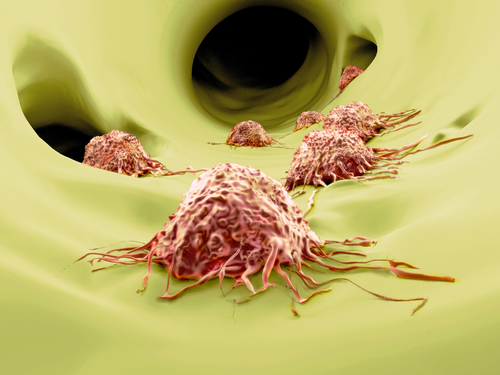Some types of breast cancers can prevent the development of secondary tumors elsewhere in the body, a process known as metastasis, through an immune-mediated inflammatory mechanism, an international research team showed.
Understanding the complex communication network between the primary tumor and the disseminated metastasis-initiating cancer cells could open new therapeutic avenues to prevent cancer recurrence and improve survival rates.
The findings were reported in the study “IL-1β inflammatory response driven by primary breast cancer prevents metastasis-initiating cell colonization,” published in the journal Nature Cell Biology.
“This new research has yielded that rare thing – a clue from the cancer itself about new possibilities to fight its spread,” Christine Chaffer, PhD, co-lead author of the study from the Garvan Institute of Medical Research, said in a press release.
“Our goal is to work out how we can mimic this ‘freezing’ of secondary cancers, so that one day we might influence all breast cancers to keep their secondary tumors in check,” Chaffer added.
It is known that once breast cancer has spread to other parts of the body, treatments are far less effective, and a patient’s prognosis worsens.
Using mice models of breast cancer, researchers observed that some had fewer metastases than others. After several experiments, they found that the primary tumor was actually controlling the effective dissemination of its own malignant cells throughout the body.
A detailed analysis of the primary tumor and its metastasis-initiating cancer cells revealed the existence of a communication pathway between the two. Breast cancer cells at the primary tumor site were found to promote the activation of a subset of IL-1β-producing immune cells, which in turn would find the distant cancer cells and prevent them from generating new tumors.
The signals mediated by IL-1β were found to be sufficient to maintain the metastasis-initiating cancer cells in an undifferentiated state with a reduced potential to proliferate and grow. In effect, this “froze” potential secondary tumors.
According to Chaffer, when metastasis-initiating cancer cells “are settling, before they have established a new tumor, they are particularly vulnerable because they are in an intermediate state, and their identity isn’t very solid. It’s at this point that the immune system can intervene.”
To further confirm their findings, researchers blocked the inflammatory process at the primary tumor site. Because these cancer cells could no longer activate the IL-1β-producing immune cells, the inhibitory signals were not transmitted, and mice developed distant breast-cancer metastasis.
Importantly, the team found that this mechanism does not only happen in mice but also in humans.
After analyzing clinical data from patients with breast cancer, the team found that those who had high levels of IL-1β had improved outcomes, with longer distant metastasis-free survival and better overall survival rates.
“When you have a primary tumor, there are untold numbers of breakaway cells [metastasis-initiating cancer cells] that will travel throughout the body,” Chaffer said. “By some estimates less than 0.02% of breakaway cells will form secondary tumors.”
With these findings, it may be possible to “have a real opportunity to bring this number down to zero,” Chaffer added.
The team currently is exploring other potential signals that may be involved in this inhibitory mechanism. In addition, further studies are warranted to determine if such a communication network is used by other cancers as well.
“We want to understand exactly what the tumor is releasing to activate this immune response, and how immune cells are targeting the secondary sites,” Chaffer said. “In principle, all of these steps present therapeutic opportunities that could be used to stop a cancer from developing any further.”
The study was the result of a collaboration between the Garvan Institute of Medical Research and the Boston-based Brigham and Women’s Hospital, Dana-Farber Cancer Institute, Harvard University, and Massachusetts Institute of Technology.

